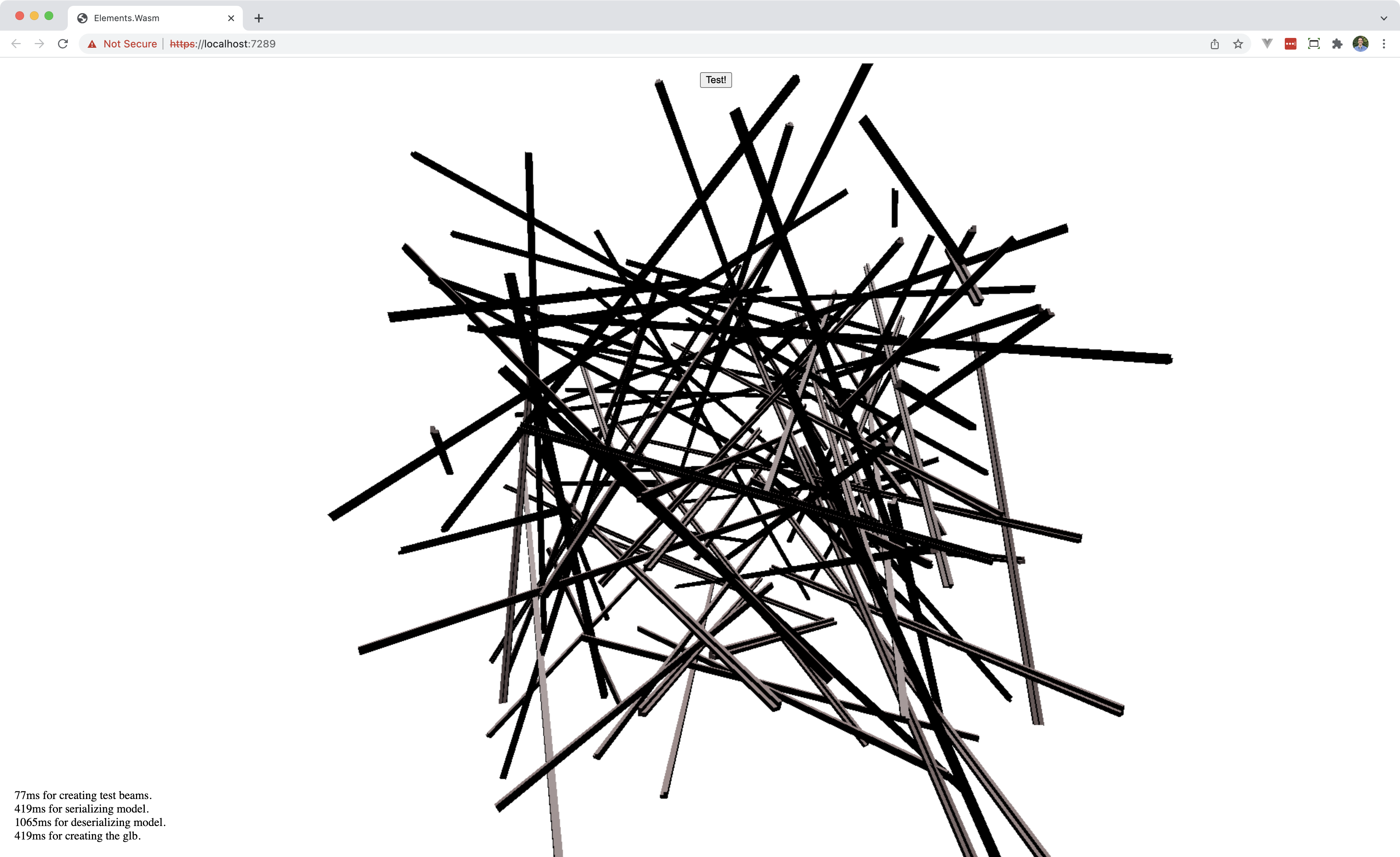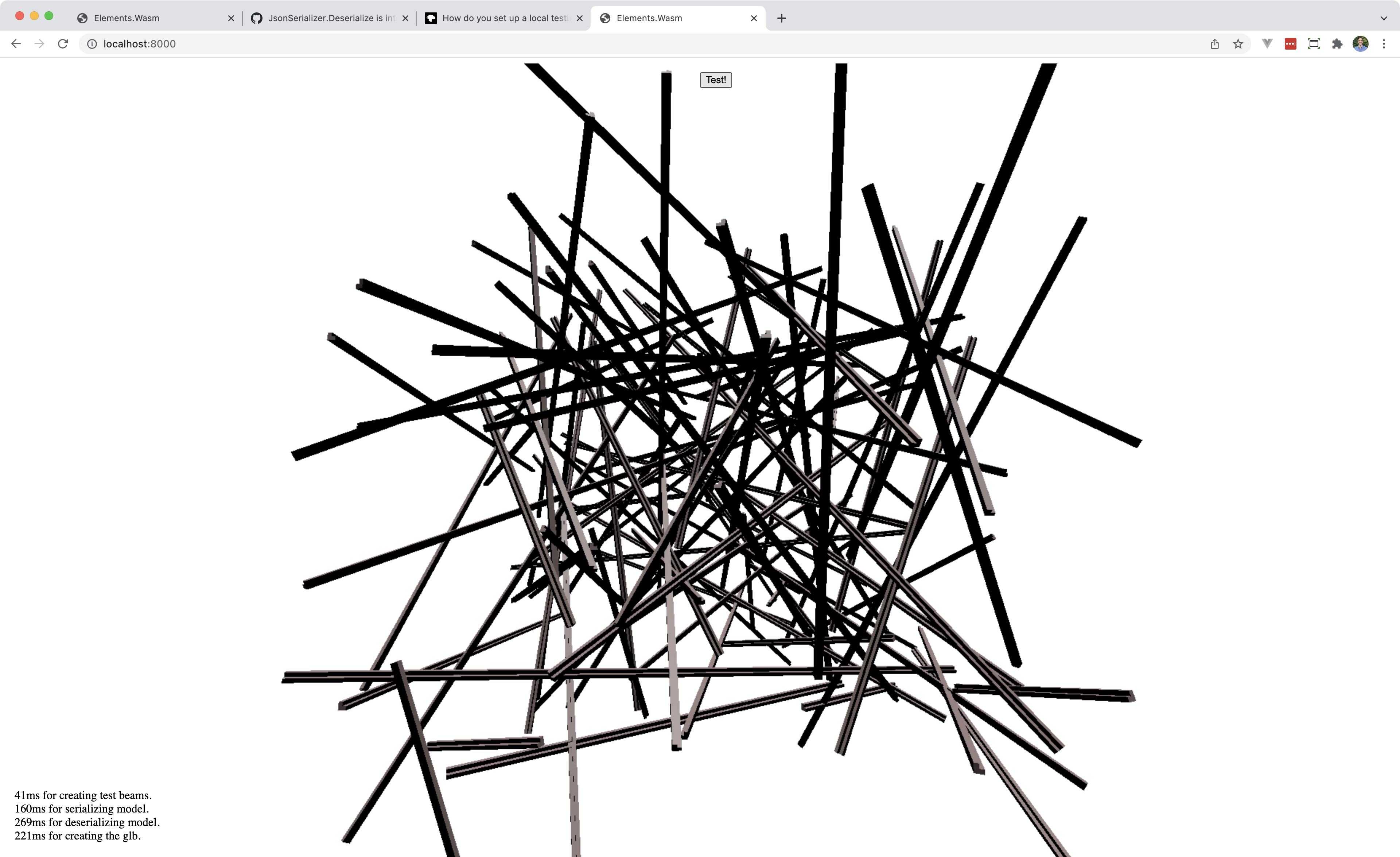-
Notifications
You must be signed in to change notification settings - Fork 73
New issue
Have a question about this project? Sign up for a free GitHub account to open an issue and contact its maintainers and the community.
By clicking “Sign up for GitHub”, you agree to our terms of service and privacy statement. We’ll occasionally send you account related emails.
Already on GitHub? Sign in to your account
Use System.Text.Json for JSON serialization and deserialization #870
base: master
Are you sure you want to change the base?
Conversation
…nto wasm-minimal
…nto wasm-minimal
There was a problem hiding this comment.
Choose a reason for hiding this comment
The reason will be displayed to describe this comment to others. Learn more.
Reviewable status: 1 change requests, 0 of 1 approvals obtained (waiting on @ikeough and @mattc)
Elements/src/Model.cs line 340 at r8 (raw file):
// Qualify element as a geometric element by seeing // whether it has a representation. if (element.Value.TryGetProperty("Representation", out var repProperty))
let's also verify that repProperty does not have a null value. some GeometricElements (MeshElement, for instance) may have a null Representation. Here's an easy failing test:
var model = new Model();
var meshSphere = Mesh.Sphere(5, 10);
var meshElement = new MeshElement(meshSphere);
model.AddElement(meshElement);
var json2 = model.ToJson();
var newModel2 = Model.GeometricElementModelFromJson(json2);Elements/src/Model.cs line 355 at r8 (raw file):
{ case "Elements.Geometry.Solids.Extrude": var profile = (Profile)resolver.ResolveReference(solidOp.GetProperty("Profile").GetString());
Our current deserialization logic handles inline references as well as id-based references for other elements, like Profiles. This probably doesn't occur much in normal function execution, where the Id replacement happens at AddElements time, but other pathways might use it (I ran into it w/ typescript functions where I was hand-generating model json, but I can imagine it popping up in revit, content workflows, etc). Your call — perhaps we want to be strict that the "Profile" property can always be assumed to be a string — but we could make this a bit more tolerant with something like this:
private static T ResolveOrReturn<T>(JsonElement jsonElement, string propertyName, ElementReferenceResolver resolver) where T : Element
{
if (jsonElement.TryGetProperty(propertyName, out var property))
{
if (property.ValueKind == JsonValueKind.String)
{
return resolver.ResolveReference(property.GetString()) as T;
}
else if (property.ValueKind == JsonValueKind.Object)
{
return JsonSerializer.Deserialize<T>(property);
}
}
return null;
}so the call could just be var profile = ResolveOrReturn<Profile>(solidOp, "Profile", resolver);. I could also see this being folded into ResolveReference by making it take a JsonElement instead of a string.
There was a problem hiding this comment.
Choose a reason for hiding this comment
The reason will be displayed to describe this comment to others. Learn more.
Haven't done a full review yet, just marking some stuff I noticed over the weekend.
Reviewable status: 1 change requests, 0 of 1 approvals obtained (waiting on @ikeough and @mattc)
There was a problem hiding this comment.
Choose a reason for hiding this comment
The reason will be displayed to describe this comment to others. Learn more.
Reviewable status: 1 change requests, 0 of 1 approvals obtained (waiting on @ikeough and @mattc)
Elements/src/Serialization/JSON/ElementConverter.cs line 112 at r9 (raw file):
int end = discriminator.IndexOf(">", start); string elementType = discriminator.Substring(start, end - start); if (!resolver.TypeCache.TryGetValue(elementType, out var genericType))
It's quite common to come across a type you don't have a class for. We need to be able to fall back to Element or GeometricElement if appropriate.
There was a problem hiding this comment.
Choose a reason for hiding this comment
The reason will be displayed to describe this comment to others. Learn more.
Reviewable status: 1 change requests, 0 of 1 approvals obtained (waiting on @ikeough and @mattc)
Elements/src/Serialization/JSON/ElementConverter.cs line 112 at r9 (raw file):
Previously, andrewheumann wrote…
It's quite common to come across a type you don't have a class for. We need to be able to fall back to
ElementorGeometricElementif appropriate.
(actually, since this is just the proxy code, it's probably safe to just fallback to "Element.")
System.Text.Json fixes
BACKGROUND
We would like to use Elements in Hypar's web application, specifically for geometry creation. This requires being able to deserialize a model and generate geometry quickly. Previous testing with the existing
Newtonsoft.Jsonserialization methods revealed poor performance when used through web assembly. Microsoft's recommendation is to move toSystem.Text.Json.DESCRIPTION
ElementConverter<T>: JsonConverter<T>which takes the place of theJsonInheritanceConverterto handle element reference and inheritance serialization.JsonPropertywithJsonPropertyName.Newtonsoft.Jsonthroughout the core Elements project.Elements.Wasm, a minimal blazor test application, to test model creation, serialization, deserialization, and visualization.Trade-offs
Moving to
System.Text.Jsonis not a 1:1 port. We have had to make several trade-offs.JsonPropertyis nowJsonPropertyNameand doesn't support theRequiredorNullValueHandlingparameters. This makes it impossible for us to specify, at the property level how null values should be handled. These parameters are removed which means if we receive a null value for a property that used to specify that the value must not be null, instead of getting a deserialization validation exception, we get a type mismatch exception. The end result of the two is the same however, an element is not added to the model. If we find this is problematic, we will need to handle it using converters.out errorsparameter that previously recorded deserialization errors has been removed. TheModelConverternow plays the part of the handling element deserialization errors gracefully, but we cannot at this time return those errors to the caller.JsonPropertyattribute. We've added theIncludeFieldsflag to the serializer and made all of these fields follow Pascal case standards, which is going to break serialization for the two types where this pattern was used (CellComplex, andAdaptiveGrid).JsonConstructor. These constructors must be public.JsonConverter(typeof(ElementConverter<Curve>))We got away without doing this previously because (I think), json.net's converter's did not need to be typed. We will need to ensure that all built-in element types have the correct attributes applied. And, we will need to make sure that generated elements code applies an attribute to properties whose type inherits from Element.TESTING
FUTURE WORK
System.Text.Jsonfacilitates updating our element addition code to not require recursive addition of sub-elements as those elements will be "read ahead" during deserialization.REQUIRED
CHANGELOG.md.This test, creates a model, serializes it, deserializes it, and writes it to glTF.
Release build without AOT.

Release build with AOT.

TODO:
PositionConverterGeometryConverterSolidConverterMeshConverterModel.ToJsonModel.FromJsonJsonInheritanceConverterThis change is